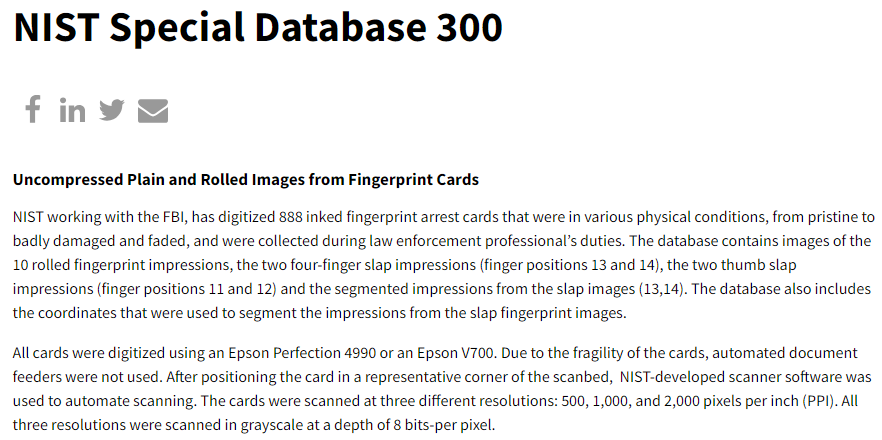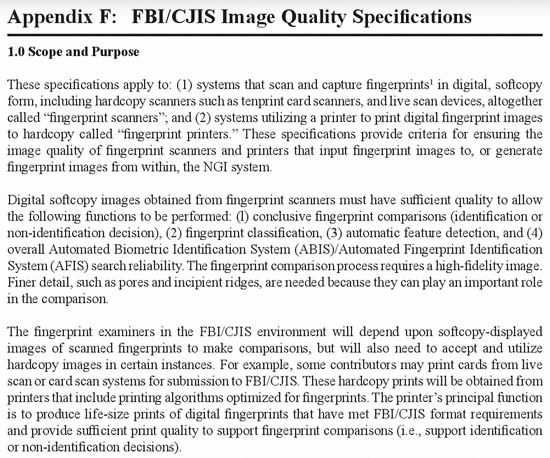(Part of the biometric product marketing expert series)
I recently read a web page (I won’t name the site) that included the following text:
…fingerprints, palm prints, latents, faces, and irises at 500 or 1000 ppi.
Which is partially correct.
Yes, fingerprints, palm prints, and latent prints are measured in pixels per inch (ppi), with older systems capturing 500 ppi images, some newer images capturing 1,000 ppi images, and other systems capturing 2,000 ppi or larger images. 2,000 ppi resolution is used in some images in NIST Special Database 300 because why not?
I don’t know of any latent fingerprint examiner who is capturing 4,000 ppi friction ridge prints, but I bet that someone out there is doing it.
But faces and irises are not measured in pixels per inch.
Why not?
Because, at least until recently, friction ridge impressions were captured differently than faces and irises.
- Since the 19th century, we’ve naturally assumed that friction ridges are captured via a contact method, whether by inking the fingers and palms and pressing against a paper card, pressing the fingers and palms against a livescan platen, or pressing a finger on a designated spot on a smartphone.
- You don’t press your face or iris against a camera. Yes, you often have to place your iris very close to a camera, but it’s still a contactless method.

Obviously things have changed in the friction ridge world over the last decade, as more companies support contactless methods of fingerprint capture, either through dedicated devices or standard smartphone cameras.
And that has caused issues for organizations such as the U.S. Federal Bureau of Investigation, who have very deep concerns about how contactless fingerprints will function in their current contact-based systems.
For example, how will Electronic Biometric Transmission Specification Appendix F (version 11.2 here) compliance work in the world where the friction ridges are NOT pressed against a surface?


